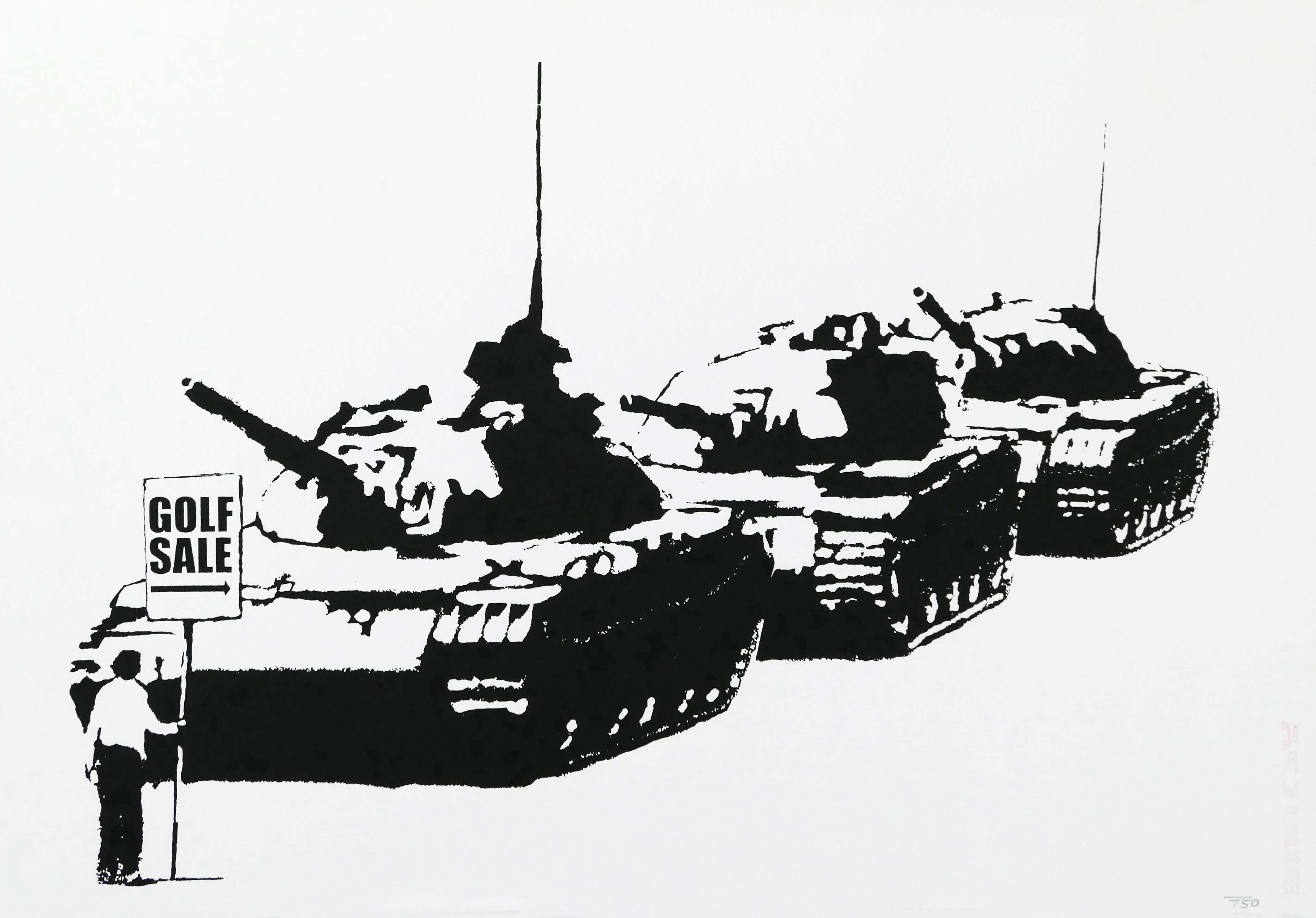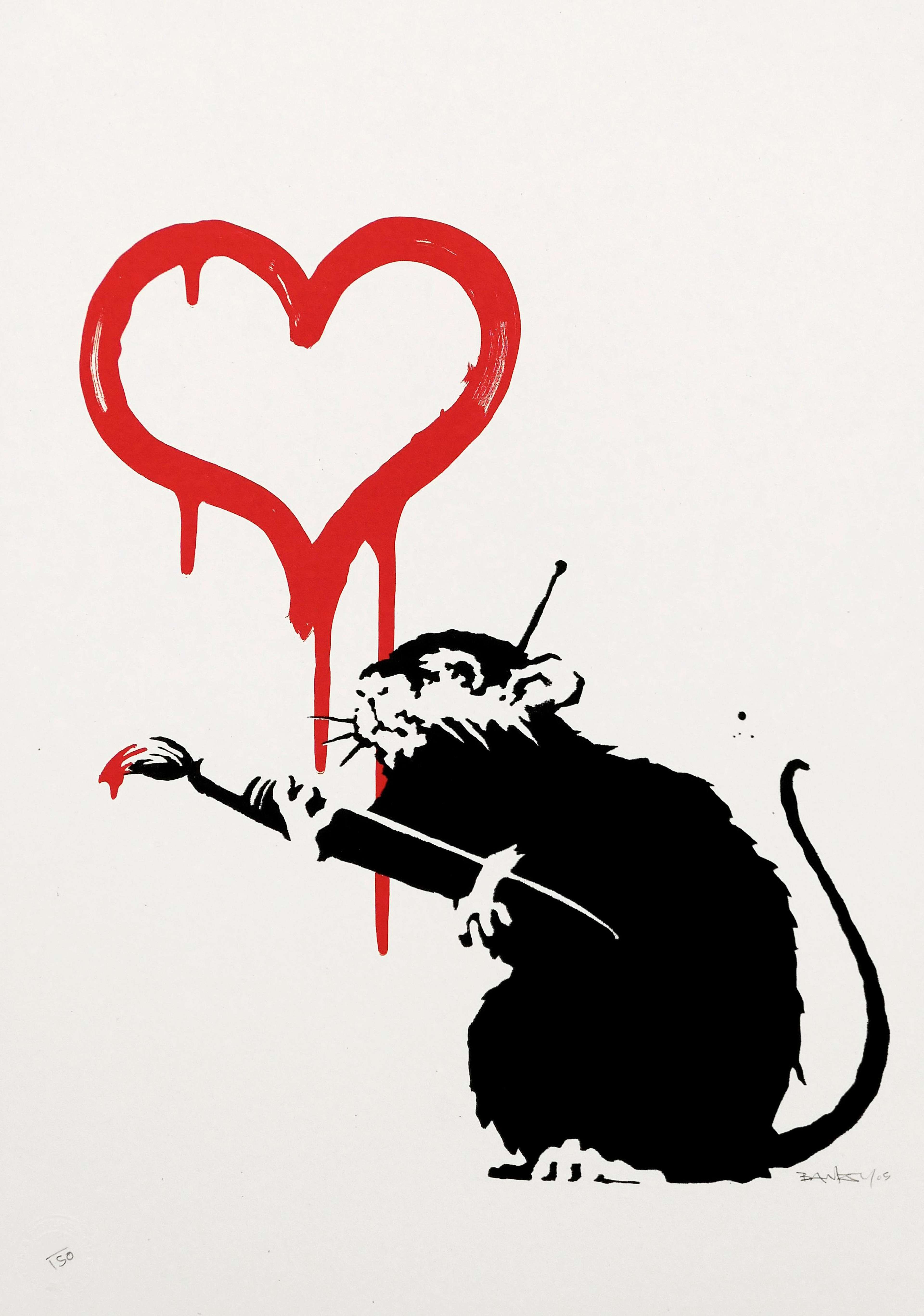 Morons © Banksy 2006
Morons © Banksy 2006
Banksy
269 works
Contrary to the infamous shredding of Banksy’s Love Is In The Bin in 2018, not all damage adds value. MyArtBroker speaks to insurance companies Hiscox, Ultimart and Brownhill Group about how to insure your art, should the worst happen.
Banksy’s Love Is In The Bin is now valued in the millions after its self-shredding stunt at Sotheby’s 2018, but not all damage adds value. Buying insurance for your art collection is essential, but it can also be complicated, fraught with “what ifs” and unknowns.
What if your Banksy print has dramatically increased in value? What if you want to display your art in your home rather than hide it away? Whether you are a first-time buyer or seasoned collector, here we answer key questions around art insurance, just in case the unexpected happens.
How do I insure my new Banksy print?
From the moment you own the artwork, anything that happens to it is your responsibility. The best first step towards insuring your art is to prepare your paperwork: everything from seller receipts to authentication certificates and recent valuations – you can request a valuation here.
If it is Banksy insurance you are preparing for, ensure you have a certificate from Pest Control, the only body that can authenticate a Banksy print. If you do not have one of these, you will need to apply for one. Find out more in our Pest Control guide.
Is art covered by household insurance?
Hiscox Home Insurance Policy provides £10,000 of cover for your art collection. If the value of your collection exceeds this, they can provide the extra cover as needed. There is limited admin required on your part and newly acquired pieces are automatically covered as long as your collection value stays below £10,000.
However, for artworks above this value – which includes most of Banksy’s prints – you might enlist a specialist art insurer like Ultimart Insurance. They offer a variety of bespoke insurance policies for art. “Getting tailored artwork cover is key, if the artwork is increasing in value quickly then standard home insurance will not make allowances for this,” says Phoebe Nicholson, General Manager at Ultimart.
Ultimart’s Worldwide All Risks policy covers art for accidental damage (this is not always covered in a standard home policy). It also insures your art for when it's outside of your home address, including transit. They also have no policy excess, so nothing to pay if you do need to claim. Plus, their cover is also warranty free (unlike most standard home policies).
My collection is growing—how do I insure new artworks?
Good quality insurance policies contain an ‘acquisitions clause’, explains Andrew Mitchell, a Line Underwriter for Hiscox’s Art & Private Clients division: “An acquisitions clause will automatically cover new items within a percentage of the overall values insured on your policy, as long as they are declared to the insurer within a reasonable period (typically 30 or 60 days) and the requisite premiums are paid.”
“Ensure you keep all your proofs of purchase in case you need to make a claim for a new piece before you have made the declaration. This will help confirm your ownership and that the loss or damage occurred after you became the owner,” advises Mitchell.
Brownhill Insurance Group also has a scheme with an automatic 25% uplift to the sum insured, to cover new items that you acquire. They have a second option where the policy has banded limits of cover: any new acquisitions are automatically covered, provided the total value of your collection is still in the correct band. We still recommend you notify your insurer as soon as you can after the purchase, to ensure the correct cover is in force.
What if my art increases in value?
Art is likely to appreciate over time: if you were one of the first lucky buyers of Banksy’s Girl With Balloon signed print in 2004, your £150 investment could be worth up to £475,000 in 2021.
“Ultimart provides Value Increase Protection Cover of up to 150% for market appreciation and up to 200% for death of artist, which means that you are protected as the value escalates,” says Phoebe Nicholson. With Banksy, however, it’s a good idea to get your cover reviewed every year, as the increases can happen quickly. You can ask MyArtBroker for a valuation here.
Gary Tommy, Compliance Director at Brownhill, stresses the importance of obtaining a valuation from a bona fide valuer. “Such a valuation ensures you are correctly insured, and means that there is no ambiguity when it comes to claiming payouts from the insurance company,” he says.
“If you purchase directly through MyArtBroker, your purchase receipt will act as your valuation. Alternatively, you can get a separate valuation that would be acceptable to us through them,” adds Nicholson.
What about if your art decreases in value? In the ongoing global pandemic, “clients have been a little more nervous about purchasing larger pieces, with potential anxiety over the uncertain financial future,” says Nicholson, “which is why it’s a good idea to have a policy like Ultimart’s Agreed Value cover – even if the art market dips and the value of the artwork falls below the sum insured, we will still pay out the sum insured.”
How do I care for my Banksy print?
While you may have an excellent art insurance policy in place, it is important to care for your artwork correctly. Prints should be framed with UV glass and unframed prints should not be left rolled up. Read more in our Guide to Caring for Your Banksy Print.
Look after your paperwork: compile a detailed inventory of your collection, including the artwork details, medium, edition number, signed/unsigned, dimensions, purchase details, current market value and any other costs for framing or restoration.
Photographs of your artworks are also important records. Make sure to capture details such as the signature, the edition number, any defects, hand finishes or personalisation.
How and where should I store my Banksy print?
Security is important, as with anything valuable. But we think Andrew Mitchell from Hiscox puts it best:
“Art is at its best when it is doing what it was created to do: give stimulation. Stimulation of enjoyment, discussion, argument and thought-provocation. It can’t do that if it’s locked away in a vault. Displaying, moving, lending and enjoying art comes with inherent risk, but that’s what insurance is for.”
If you have pieces that are not on display, consider keeping them in a safe or a locked safe room as an extra security measure. There are also specialist storage facilities for this. Phoebe Nicholson from Ultimart recommends, “if it is a higher value piece or part of a high-value collection (£250k or over), then having an intruder alarm at your home would be absolutely necessary.”
Love Art Insurance, part of the Brownhill Group, concur on the importance of an intruder alarm when work is stored in your home. Before installing one, they suggest speaking with your insurer first to check that the alarm meets your insurer’s requirements.









